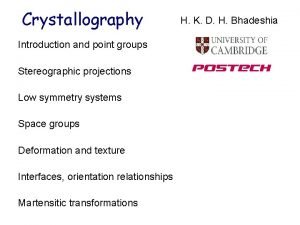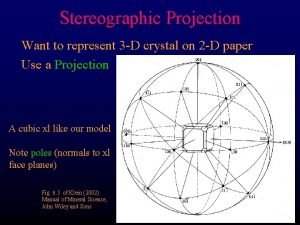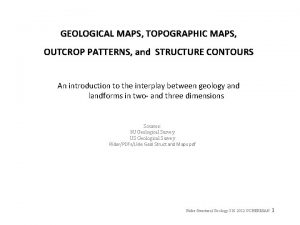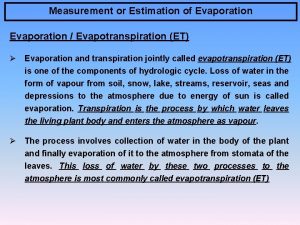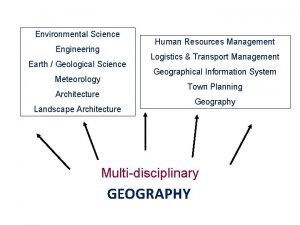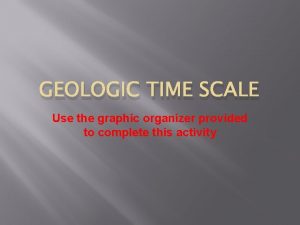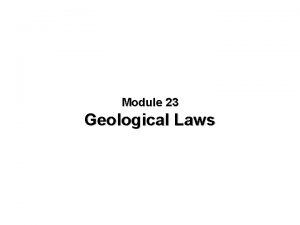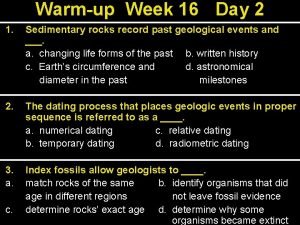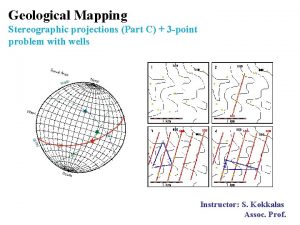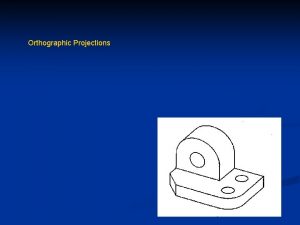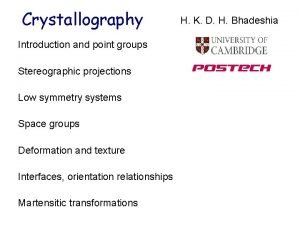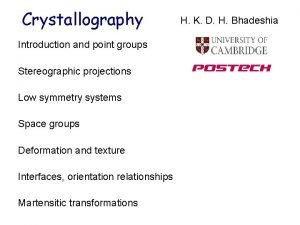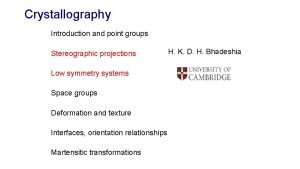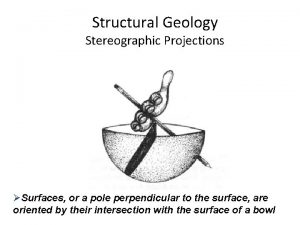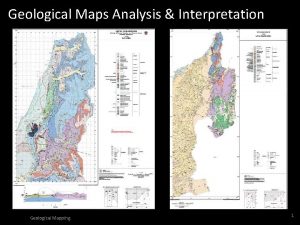Geological Mapping Stereographic projections Part A Instructor S













- Slides: 13

Geological Mapping Stereographic projections (Part A) Instructor: S. Kokkalas Assoc. Prof.

Stereonets • • Solving geometrical problems– displays geometry and orientation of lines and planes. Stereonets are used for plotting and analyzing 3 -D orientations of lines and planes in 2 -D space • It is a three-dimensional protractor. • Stereonet projection allows us to do plot of lines and planes but in 3 -dimensions. We can plot the orientation of planes, determine the intersection of two planes, angles between planes, rotate lines and planes in space about vertical, horizontal and inclined axes Applications • • • Landslide hazard/slope failure studies Earthquake studies Fracture analysis Mining and oil industry Engineering And… Practically anything that deals with relative orientations of planes and lines

Stereonets • Basic principles • Any line or plane can be assumed to pass through the center of a reference sphere • Planes intersect the lower hemisphere as GREAT CIRCLES • Lines intersect the lower hemisphere as POINTS • The great circles or points are projected on the horizontal plane to create STEREOGRAPHIC PROJECTIONS or stereograms

Lambert net (Schmidt net). equal-area Stereographic net (Wulff net). equal-angle

Stereographic Projection Two types of net are in common use: 1. Stereographic net, equal angle (Wulff net). 2. Lambert, equal-area net (Schmidt net) Stereographic net-Wulff Lambert Equal – Area Net

Lambert, equal–area net N Small circles (Look like LATITUDES) Great circles (Look like LONGITUDES) Lower hemisphere projection S

N Lambert, equal–area net Primitive circle = horizontal plane Straight lines = vertical planes 0 20 40 60 80 80 60 40 20 0 Dip angles Great circles = inclined planes Examples S Lower hemisphere projection

• Approximate method for plotting planes-lines 3 D view Map view-add symbol Equatorial projection from reference sphere Stereographic projection

Stereonets • Precise method for plotting planes N 0 90 270 Each dipping plane has its pole. 180 270 90 180 USGS

Pole of a plane §The orientation of a plane can be uniquely described by the orientation of a line perpendicular to a plane. §If the trend and plunge of a normal (pole) to a plane is known, the orientation of the plane is also known. Great circle 90 o pole

• Precise method for plotting planes With dip-direction/dip notation Plane: Dip direction/dip 230ο/60ο

Stereonets • Precise method for plotting lines N USGS

Before we go on, let’s review Pitch (or Rake) ch pit plunge
 32 point groups stereographic projections
32 point groups stereographic projections Calcite cleavage planes
Calcite cleavage planes Stereographic projection of point groups
Stereographic projection of point groups Stereographic projection structural geology
Stereographic projection structural geology Stereographic projection animation
Stereographic projection animation Prinsip analisis dan desain
Prinsip analisis dan desain The associative mapping is costlier than direct mapping.
The associative mapping is costlier than direct mapping. Forward mapping vs backward mapping
Forward mapping vs backward mapping Geological outcrop map
Geological outcrop map Factors affecting evapotranspiration
Factors affecting evapotranspiration Geological
Geological Graphic organizer of geologic time scale
Graphic organizer of geologic time scale Unconformity
Unconformity Sedimentary rocks record past geological events and ____.
Sedimentary rocks record past geological events and ____.


